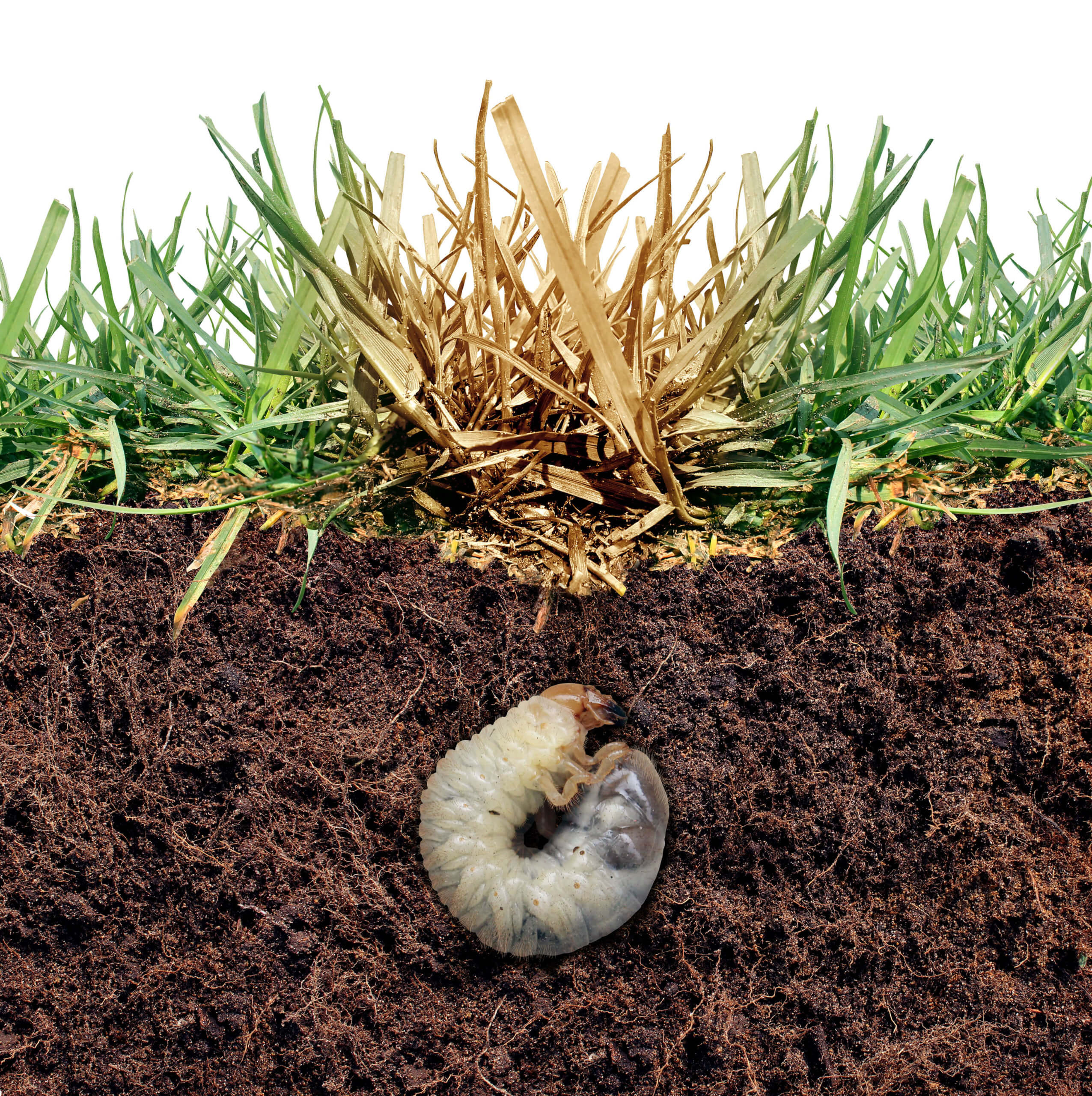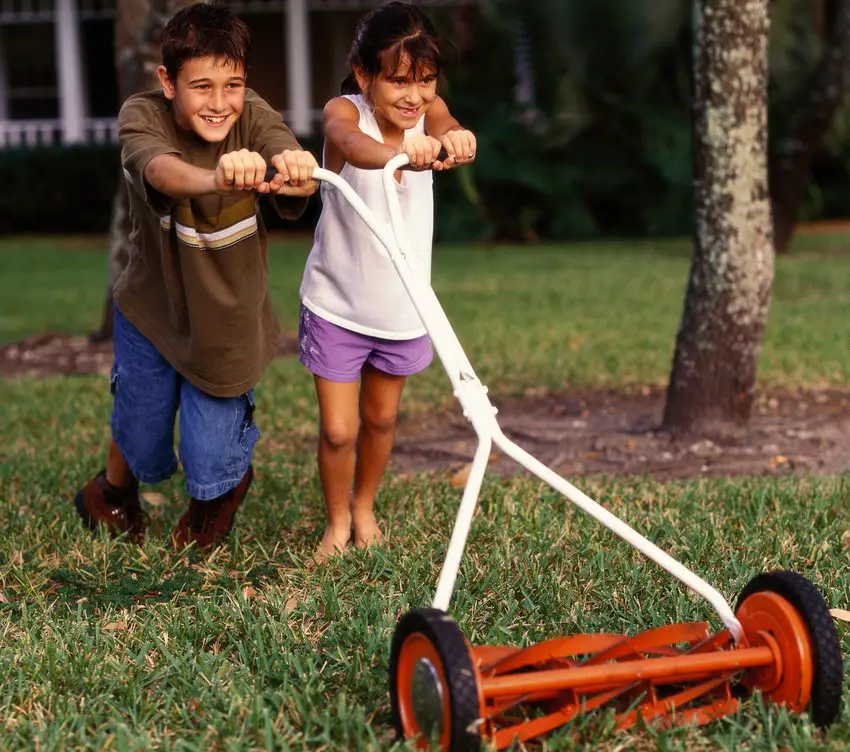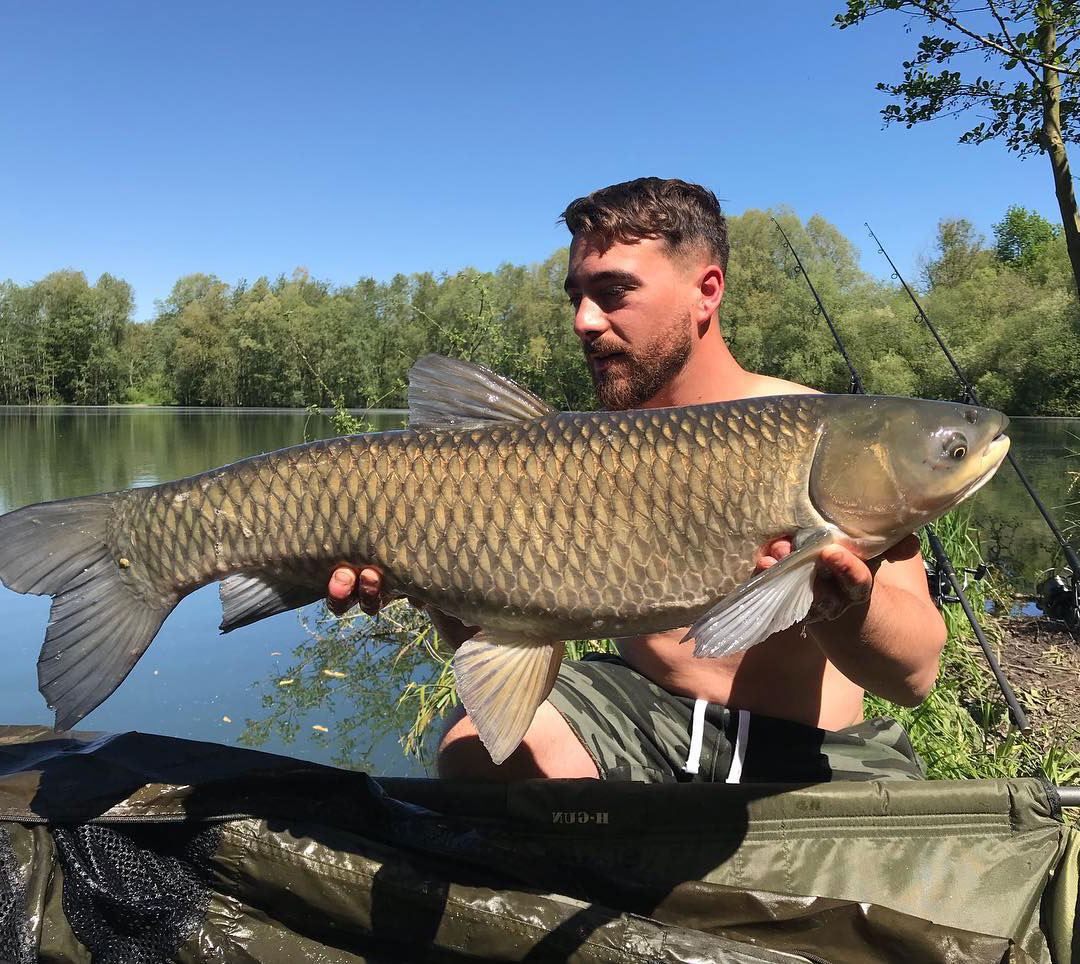Why Do I Need To Feed My Lawn
From being used as footie pitches to housing animals and being subjected to the wear and tear of daily life, our lawns work hard.
Grass is an unusual plant in that its new growth comes from the crown. This is the part of the plant where the root meets the shoot section, in line with the soil. Thats why we can mow grass over and over again throughout the warmer months of the year without it dying. Were just cutting back the old growth.
Grass roots form an extensive network under the ground and creating a healthy environment for the roots means youll be rewarded with strong, healthy grass growth.
Although like all green plants, grass creates its own food through , we can boost the nutrients it needs to do so by adding specialist lawn food to the ground.
Feeding the lawn helps the grass to grow more strongly. This, in turn, helps to reduce the amount of dreaded weeds and moss that will take hold. Fertilising your lawn will help it to look lush and green, speed up its growth and improve disease resistance.
Fertilization After Seeding Your Lawn
Opting for fertilization is not a good idea once you have completed your seeding on your lawn. Instead, you should try the opposite, which means the best time to apply fertilization is just before seeding. Make sure you only rely on starter fertilizer as you start using it.
It helps get an instant release of nitrogen which will help you enjoy the best of the seeding process. It will then help in getting a good nutritional boost. So, when you follow this schedule, you will likely see your grass overgrowing. In a nutshell, you get green, lush and healthy grass in your yard.
Best Time To Fertilize Lawn
Fertilizing in the morning allows the soil to take in the most nutrients, soak in the morning dew and take advantage of cooler temperatures. Thats the best time. Do not apply fertilizer on an abnormally hot day, not even in the morning. Wait until the weather cools back down to a normal temperature.
You can mow anytime after fertilizing with a granular treatment. With a liquid treatment, wait a day or two.
Shutterstock
Recommended Reading: How Much To Get Lawn Mowed
What After Your Lawn Fertilization
Once you carry out the lawn fertilization, make sure you check the following things:
- Watering your lawn after fertilizing the space is always a good idea. This helps the fertilizer stuck on the grass blades to seep into the ground. However, ensure you do not water it too heavily, making the fertilizer deep inside the soil.
- To reduce the excessive fertilization impact, you must leave the grass clippings on the turf once you mow. It helps put nitrogen back into the soil, naturally feeding the roots.
- You can easily find new grass on the lawn once you start planting it in your yard. To make this technique work, you can help make things more effective. It would help if you tried fitting a mulching blade over your lawnmower. It helps reduce the grass into small pieces, allowing the quick start of the decomposition process.
- If you find your soil having a heavy clay nature, or you have excessive traffic on your turf, then relying on some manual lawn aeration options regularly is a good idea. However, if your area is significant, you require your efforts behind the aerator, which you can easily pull using the garden tractor.
Should You Feed A Lawn After A Heatwave

Growing grass in hot, dry weather can be tough, and it may be tempting to give it an extra dose of fertilizer to help it bounce back to its former glory. However, this isn’t advised.
‘After a heatwave, you should avoid putting any kind of fertilizer on your lawn as this will stress it out even more,’ says Carlos Real, Lawn Care Expert and Managing Director of TotalLawn . ‘There are a few things you can apply instead to bring it back to its luscious green glory.’ One of these is a wetting agent.
‘If youre not familiar with wetting agents, they assist with the breakdown of hydrophobic areas on the surface of the soil, to promote a deeper water penetration in the soil. In other words, they help the soil retain water for longer periods of time,’ he explains. ‘There are many brands to choose from, the truth is they will all do a similar job so buy from whoever or wherever is convenient for you.’
You can also apply liquid seaweed . ‘This is a great product that you can apply at the same time as watering your lawn,’ Carlos says. ‘It will increase the biodiversity in your soil, reduce stress in the lawn, further improve water retention, and give the plant some of the nutrients it needs.’
He recommends applying this natural product every four to six weeks, adding that it can be used alongside any other feed or lawn care routine you have. And check the seaweed content before you buy, as a low content will have little effect. ‘The higher the percentage, the better,’ he says.
Read Also: What Time Can You Mow Your Lawn
Does Fish Poop Fertilizer Aquarium Plants
Well, one of the most popular organic fertilizers is fish emulsion made from plant waste, so yes, it only makes sense that fish poop is good for plants too. When fish waste is used for plant growth, it provides not only naturally derived NPK, but also nitrogen-fixing bacteria, which in turn helps the plant grow faster and more vigorously.
Fish emulsions can be used in a wide variety of ways to help plants grow. In fact, they are so effective that they have even been used as an alternative to fertilizer in some cases.
For example, a study published in the Journal of Agricultural and Food Chemistry found that the addition of 1/2 teaspoon of fish oil to a 1-gallon pot of water resulted in an increase in growth of up to 20 percent, compared to water that was not treated with the oil.
Things You Do After Your First Use Of Lawn Fertilizer
Once you apply fertilizer, you have to keep a few tips in mind. Have a look:
- Avoid using the lawn for at least 24 hours after the fertilization process. Keep away the kids and pets from the grass till you find things dry, and once you find the soil has absorbed fertilizers.
- Avoid mowing for at least two days. The reason is simple: it can hamper the setting of fertilization.
These are basic things to keep in mind once you apply the fertilizer.
You May Like: How To Get Mold Off Lawn Chairs
Why Do Aquarium Plants Turn Yellow
If the nutrients are not enough, the aquatic plants cannot grow healthily. They will turn yellow once they cant absorb the nutrition. It means that aquatic plants need to be fertilized. Basefertilizer, liquidfertilizer, and pelletfertilizer are some of the basefertilizer, liquidfertilizer, and pelletfertilizer that are used for selecting. Pellet fertilizers are the most common type of fertilizer used in aquaponics. They are used to fertilize the bottom of the tank.
The pellets are mixed with water and then added to the aquarium. Pellets can also be added directly into the water, but this is not recommended because it can cause algae blooms. If you are using pellets, be sure to add them in a well-ventilated area. This will help prevent the algae from growing and killing the fish.
I Planted My Grass Seed And It Didnt Grow Whats Wrong
There are many things that could have happened. Too much or too little water, weather conditions, use of weed control products, and/or poor soil conditions can all be possible causes. Because each situation is different, it is best to call and speak with one of our experts to help diagnose the problem. 1-800-543-TURF Back to Top
Also Check: What Is The Best Commercial Walk Behind Lawn Mower
When Should You Aerate A Lawn
Lawn aeration should be done once a year only or as required, otherwise it can damage the grass.
Some of the usual signs that point to the need for aeration include recent dry conditions, a spongy feeling underneath your feet when you walk on the grass, or if theres compacted soil that needs to be broken up.
Resources:
Why You Should Water In The Weed And Feed
Many products state clearly on the label to water in the product immediately afterward. Its best to follow the directions.
Generally, this means that there is a special ingredient in the product. It requires water for it to go into the soil and get absorbed by the plant roots. Until its watered, it cant work correctly.
Theres another reason to water in the product. The ingredients get washed down under the foliage of the grass. That means you dont get it on your shoes when you walk on it.
Also Check: What Is The Best Lawn Edger
When To Apply Weed And Feed
Early spring before weeds appear is the best time to apply weed and feed that contains pre-emergent herbicide. If weeds have already appeared in the lawn, a pre-emergent herbicide won’t have any effect on them. On the other hand, weed and feed that contains post-emergent herbicide is only effective if applied to lawns that are already infested with weeds. What this means in practice is that post-emergent weed and feed can be applied from late spring onward.
Problems With Using Weed And Feed

It can be tricky to get the timing right when you want to use weed and feed on your lawn. The grass might not benefit from a fertilizer at the time when the herbicide must be applied. In early spring, the right time to apply a pre-emergent herbicide, a dose of fertilizer encourages lush, green growth, but the grass benefits more from root development to help it grow well over the coming summer. Similarly, post-emergent herbicides are most effective if applied in late fall when broadleaf weeds are storing nutrients in their roots, yet a better time to apply fertilizer would be early or late summer.
References
Also Check: How To Check For Lawn Grubs
When To Schedule Lawn Maintenance
It is important to schedule your lawn care maintenance during times that match the life cycle of the turfgrass.
- Do not add fertilizer too early in the spring. This may encourage the grass to grow during a time when it should be slow or dormant.
- Do not spray to control weeds when temperatures are warm. This increases the likelihood of damaging the lawn.
- Do not fertilize in hot mid-summer months. This can cause irreversible damage to your lawn.
- Crabgrass doesnt develop until late spring or early summer, so dont apply herbicide used to prevent pre-emerging crabgrass in the fall.
Read Also: Violet Weeds
Which Lawn Feed Should I Use
Some lawn treatments just feed your garden lawn and are ideal if your lawn is weed and moss free, but others have added ingredients such as weed killers and/or moss killers. Furthermore, some are designed to use in the autumn to toughen up the grass ready for the winter and/or kill moss.
The reason some lawn feeds are better than others, is because they can release nitrogen and feed over several weeks rather than in one rush soon after application.
The best lawn feed to use is one that provides protection from weeds while systematically feeding your lawn and ideally should be applied between April and September. Try Miracle-Gro EverGreen Complete 4 in 1 as it will provide year-round feed when applied no more than twice a year.
Don’t Miss: How To Restore Grass Lawn
Caring For Lawns After Application
Tips To Apply Weed & Feed Properly
If you want to learn when to use weed and feed, keep in mind several important tips:
- Measure your lawn: Its good to know which part of the yard you want to fertilize with weed n feed product. This fact is also useful when you calculate the quantity of fertilizer that is allowed to spread.
- Wait 2-4 days after the mowing: The soil needs time to incorporate the grass cutting. Even if you collect it mechanically, you will always leave something behind. After a little break, the soil will be capable to absorb it again.
- Follow the precise proportions: As we mentioned before be careful about how much weed and feed you use. Also, make sure not to apply too much of it can use. If youre having some trouble, we would recommend an electric spreader for applying the fertilizer as an alternative its more precise and will ensure that you dont use too much of a product.
- Avoid watering for two days after appliance: You need to have a proper density of weeding and feeding granules. Keep in mind that water can alter the density. Hence you should water the lawn for two days after you applied the product. Of course, you should also avoid hot summer days for this kind of fertilization.
Recommended Reading: Is It Too Late To Aerate My Lawn
When To Get The Most Out Of Fertilizing
When using fertilizer it is important to apply while your grass is growing the most. Typically you can do applications to your lawn once or twice a year is enough to keep your lawn healthy, but depending on the type of grass the amount needed can vary. Specific types of cool-season grasses, such as Kentucky Bluegrass and Perennial Ryegrass do most of their growing in the winter, for that reason fertilizing during the fall and winter will yield the best results. On the other hand, if you have grass that grows mostly during the summertime, such as Bermuda, it is best to fertilize during the warmer months to ensure your lawn gets the proper nutrients. These types of grasses go completely dormant in the winter and do not need much attention when it comes to fertilizer when its cold.
Does Aquarium Plant Fertilizer Increase Nitrates
The percentages of nitrate, phosphate, and potassium are higher than the rest because they are the macronutrients that your plants need the most. When measured by a water test, Easy Green will increase the nitrate level. Green is a great addition to your garden because it is easy to grow and it grows quickly.
You can plant it in the spring or the fall, depending on when you want to harvest it. It can also be grown in containers, so you dont have to worry about overwatering it or watering it too much.
Recommended Reading: How To Rid Lawn Of Fleas
How Often You Should Apply Fertilizer To Your Lawn
Though fertilizer has its benefits, you dont want to overdo it. A full feeding is recommended at least 5-6 times per year. You want to feed your lawn when its growing most rapidly. However, you should base the frequency on your climate and the type of grass you have. For example, cool season grasses can be fertilized in late spring, but only if necessary.
Warm season grasses, like Bermuda grass, St. Augustine, zoysia, centipede and buffalo grass, should be fertilized in spring. Depending on the amount of water your grass gets, aim to reapply your fertilizer every 6-8 weeks. Keep a watchful eye on your grass. If it looks thick and green, you can probably skip the feeding. If its starting to look brown or black, give your lawn some TLC.
Best Time To Fertilize Your Lawn

Spring means more daylight and warmer temperatures. After a cold winter, this is the weather your grass is craving. If youre unsure of exactly when to lay down your first feeding, you can base it off of the temperature. Ideally, the ground should be around 55 degrees Fahrenheit. Depending on where you live, March to April is the best time to fertilize your lawn. Its also best if your yard is watered a few days before you want to apply the fertilizer, whether thats from rain or a sprinkler.
Fertilizer provides your grass with extra nutrients that help to prevent crabgrass and allow it to grow green and thick. To ensure youre laying the feed correctly, start around the perimeter of your lawn. Then, you can start filling in the middle. Similar to mowing your yard, you should go back and forth in straight lines. And you should always use a lawn spreader instead of your hands to complete the job.
Now that you know that spring is the best time to fertilize your lawn, here are some other helpful tips that will keep your grass thriving.
Also Check: How To Deal With Lawn Full Of Weeds